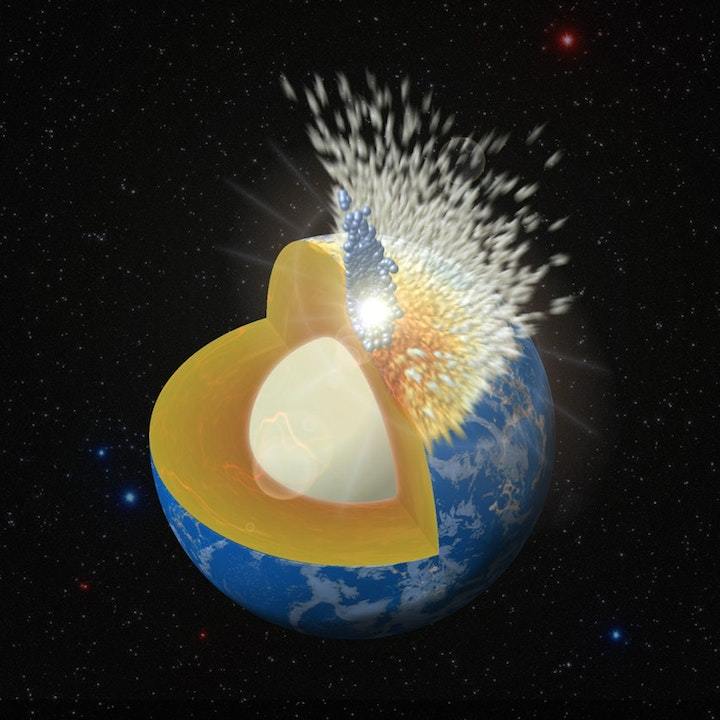.
Modelling finds the contribution of “planetesimals” to Earth’s mass was much larger than thought. Andrew Masterson reports.

Comparatively small moon-like objects smashed into the young Earth, bringing elements such as gold and platinum and adding substantially to the planet’s mass, say US scientists.
A small team led by Simone Marchi of the Southwest Research Institute in Colorado, US, used a computational method known as smoothed-particle hydrodynamics to simulate a violent period of the Earth’s life immediately following the formation of the moon.
The moon came into being about 4.5 billion years ago – around 40 million years after the solar system began. It formed due to the clumping together of debris thrown out when the proto-Earth, then a smallish object, smashed into another wayward planet about the size of Mars.
Following this episode, the Earth – larger now, because of the collision, but still smaller than it is today – was bombarded by lots of objects collectively known as planetesimals. These accrued from clumps of interstellar matter left over from the creation of solar nebula, forming rocks that varied from the size of a grain of sand to monstrous flying lumps more than 3000 kilometres across.
Planetesimals played a key role in the formation of planets in the solar system, adding not just sheer mass but also a series of elements described as “siderophile”, or iron-loving. These include gold, platinum and silver.
Previous modelling suggested that as the mini-moons slammed into the Earth, their contents, including the siderophiles, were dispersed and integrated into the planet’s mantle. Planetesimal matter was estimated to account for around half a percent of the Earth’s mass.
Marchi and her team’s new modelling, however, dramatically upgrades that estimate, increasing it by as much as five times.
The scientists concentrate their research on the larger end of the planetesimal scale, looking at objects that were between 1400 and 4400 kilometres in diameter and weighed as much as 4000 kilograms per cubic metre.
Objects this size would have been differentiated in their structures – comprising an outer layer of silicate surrounding an iron core. To discover how these would have fared when they hit the ever-growing planet, the scientists estimated impacts using a range of entry angles combined with a variety of impact speeds.
The modelling revealed that in many cases the planetesimals would not have broken up on or near the surface. Instead, the iron centres, and the iron-loving elements incorporated in them, would have punched right though the Earth’s mantle and kept going until they hit the planet’s own core, adding to its mass.
This scenario, the researchers suggest, explains why the distribution of silicate and various other elements in the Earth’s mantle is not uniform. These differences, together with differing values for isotopes of tungsten – a siderophile element – may eventually provide a decipherable record of the size and timing of mini-moon impacts.
Quelle: COSMOS
